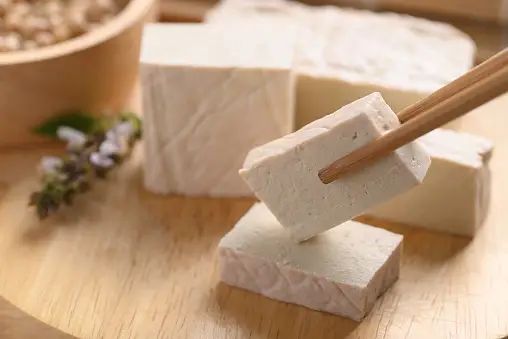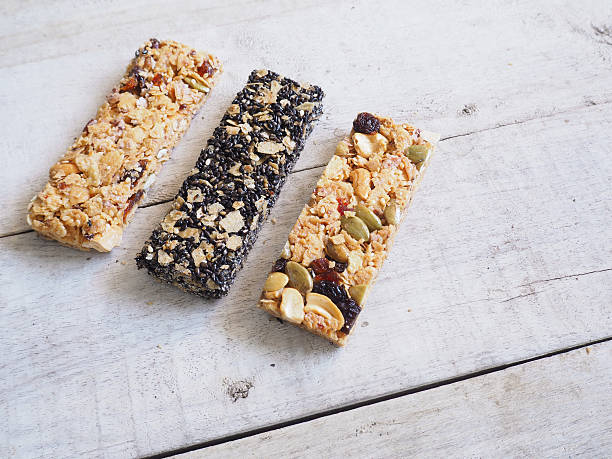What Does Takoyaki Taste Like?
As someone who loves exploring new cuisines, I’m always on the hunt for tasty snacks from around the world that I can try for the first time. During my recent trip to Japan, there was one street food that kept popping up everywhere I went – takoyaki.
The irresistible aroma and sight of these golden, round balls being freshly made right on the street stalls was enough to grab my attention. I knew I had to try them to satisfy my foodie curiosity.
In this article, I’ll share my experience and impressions as a first-time takoyaki taster. You’ll learn all about what takoyaki is, what’s inside it, what are the common toppings and sauces, and most importantly – what does takoyaki taste like?
What Exactly is Takoyaki?

Takoyaki is a popular Japanese street food snack that originated from Osaka. It consists of batter mixed with small pieces of octopus that is then molded into round ball shapes and cooked in a special pan.
The word “takoyaki” literally means “octopus fried” in Japanese. Here are some key facts about this iconic food:
- Takoyaki balls are made from a wheat flour-based batter mixed with diced octopus, green onions, pickled ginger, and tempura scraps.
- They are cooked on a special takoyaki pan or griddle with half-spherical molds to achieve the signature round shape.
- A variety of toppings and sauces are added when serving, such as takoyaki sauce, mayonnaise, dried bonito flakes, etc.
- Takoyaki is a common street food in Japan but is also often served as appetizers in restaurants.
- The standard size for each takoyaki ball is around 2-3 inches in diameter. Vendors use special takoyaki picks to rotate the balls while cooking.
So in essence, takoyaki is a savory Japanese snack made of fried batter and octopus. But describing it simply as “fried octopus balls” doesn’t do justice to the incredibly complex and delicious flavors!
Inside a Takoyaki Ball: Key Ingredients and Texture
As a takoyaki newbie, I was curious to find out what exactly goes into making these irresistible snacks and what texture to expect inside.
Here are the key ingredients:
- Octopus – Small, diced chunks of octopus are distributed throughout the batter, giving takoyaki its signature ingredient. The octopus provides a pleasant chewy texture.
- Batter – The batter is made from wheat flour mixed with eggs, water, dashi stock, and seasoning. It has a thick, creamy yet light consistency.
- Green onions – Finely chopped green onions are added to the batter to provide aromatics.
- Ginger – Small bits of pickled ginger are also incorporated for a tangy zing.
- Tenkasu – This refers to tiny tempura batter bits that provide a delicious crunch.
In terms of texture, a perfectly made takoyaki ball has:
- A crispy, golden brown exterior that gives way to a soft, fluffy interior.
- Chunky pieces of octopus distributed throughout, providing delightful bursts of chewiness.
- The batter itself is moist and light. Along with the octopus, it provides a creamy, doughy mouthfeel.
- Crunchy bits of tempura batter provide an enjoyable contrasting texture.
- The green onions and ginger are suspended throughout, delivering flavor pops.
So there’s a lot going on texturally inside each compact takoyaki ball! Now let’s get to the best part – the flavors.
What Does Takoyaki Taste Like?

Here’s a breakdown of the major takoyaki taste elements:
The Octopus
The octopus pieces infused into the batter are key to the distinctive takoyaki flavor. The octopus has a pleasant chewy bounce and slightly sweet taste. As you bite into the balls, you get little bursts of umami octopus flavor.
The Batter
The wheat-based batter has a subtle savory and eggy taste. It provides a nice base flavor and doughy richness. The batter mingles deliciously with the octopus pieces.
Aromatics
The green onion and ginger aromatics are dispersed throughout, providing fragrant hits of herbaceousness and zing. This lifts and brightens the flavors.
Crunch
The addition of tempura crunch bits adds a satisfying textural contrast and a touch of fried flavor.
Sauces and Seasonings
The various takoyaki sauces and seasonings also influence the flavor…
Overall Flavor
When you combine all the elements – the octopus umami, sweetness, and chew, the rich batter, the bright aromatics, the crispy bits – the overall effect is complex, well-balanced, and extremely appetizing!
The interior of the takoyaki balls have a wonderful savory, salty, sweet, doughy, crunchy medley happening. Now let’s look at how additional toppings and sauces take the flavors up another notch.
Essential Sauces and Toppings for Takoyaki
One of the joys of eating takoyaki is the variety of sauces, seasonings, and toppings that are typically added as finishing touches. Here are some of the most popular:
Takoyaki Sauce
A takoyaki sauce is essential for getting the quintessential flavor. The sauce is thick, sweet, and sticky with an umami taste. It often contains Worcestershire sauce for savoriness. The sauce perfectly complements and glazes the puffy takoyaki balls.
Mayonnaise
Japanese mayonnaise is drizzled generously over takoyaki. The creamy mayo adds rich fat and moisture, blending deliciously with the other ingredients. The mayonnaise also helps cool down the hot balls.
Aonori
Aonori is dried green seaweed flakes that provide a concentrated ocean flavor. It adds lovely marine notes and salty umami.
Katsuobushi
Katsuobushi refers to shavings of cured, smoked bonito fish flakes. It delivers smoky, umami depth and a touch of spicy heat. The fish flakes dance and move around from the steam of the hot takoyaki!
Other Options
Spicy cod roe, cheese, masago, seaweed flakes, and okonomiyaki sauce can also serve as tasty takoyaki toppings to mix and match.
When you customize your takoyaki with different sauces and spices, it transforms the flavor in new directions. The toppings complement and bring out the best qualities of the crispy fried batter and the octopus goodness.
How Fillings and Variations Change Up the Flavors
Another great thing about takoyaki is how versatile it is. Chefs across Japan have created many variations by switching up the fillings and ingredients. Here are some popular examples:
- Cheese takoyaki – Oozing melted cheese amps up the creamy, savory flavors.
- Mentaiko takoyaki – Spicy marinated cod/pollock roe provides a tongue-tingling kick.
- Kimchi takoyaki – Kimchi brings tangy, fermented heat and crunch.
- Curry takoyaki – Japanese curry powder bakes into the batter for aroma and spice.
- Yaki onigiri – Rice balls are inserted into the batter for heartiness.
- Gyoza takoyaki – Savory pork gyoza dumplings become the filling for a fusion twist.
There are so many possibilities to reinvent the takoyaki experience by changing up the components. The permutations lead to new combinations of textures and flavors.
My First Impressions of Takoyaki Flavors and Textures

Now that I’ve outlined all the elements that go into takoyaki, let me share my first experience eating them as a takoyaki newbie.
The first thing that hit me was the irresistible aromas wafting from the street stall. The sizzling hot grill with perfect golden-brown balls was skillfully managed by the vendor. My mouth already started watering just from the sights and smells!
I eagerly received my piping hot order of 5 pieces topped with the traditional sauces and spices. Biting into the first piece, the flavors that came through were:
- Crispy, fried shell – Love the textural contrast between the crunchy exterior and the soft interior.
- Sweet takoyaki sauce – The sticky, thick sauce provided a lovely glaze and sweetness.
- Subtle octopus umami – I could taste the faint ocean sweetness of the octopus dispersed throughout.
- Doughy batter – The batter had a nice chewy-meets-fluffy consistency and mild salty flavor.
- Zing from ginger – The pickled ginger added a refreshing, tart punch.
- Crunchy tempura bits – Little bursts of crispy texture.
- Smoky, salty fish flakes – The bonito flakes tasted like concentrated savory seafood.
- Cooling mayo – The creamy mayo helped mellow the heat.
The combination of the hot, crispy shell with the flavorful interior was incredible! Sweet, salty, umami, chewy, crispy – so many sensations in each bite. I also appreciated how the fillings were evenly distributed rather than all clumped in the middle.
The more pieces I ate, the more I grew to love the layers of textures and well-balanced savory flavors. It delivered on all my foodie hopes! The accompaniments like mayo, bonito flakes, and ginger balanced out the tastes perfectly.
Overall, as a first-time takoyaki eater, the flavors and textures provided a phenomenally satisfying experience. It definitely left me eager to sample different variations in the future. The mouthwatering aroma and taste lives up to the hype!
Where Can You Find Takoyaki?
Now that I’ve gone over what takoyaki is and how it tastes, where can you actually find it to try for yourself? Here are some of the most common places to get your takoyaki fix:
In Japan
If you visit Japan, takoyaki stands and street vendors are ubiquitous, especially in food-loving cities like Osaka and Tokyo. Look for the giveaway octopus signs and follow your nose to the wonderful aromas. Festivals and summer night markets will also have multiple takoyaki stalls.
Asian Grocery Stores
In areas with large Asian populations like California and Hawaii, specialty Asian supermarkets will sell frozen takoyaki you can heat up at home. The frozen balls capture the flavors nicely.
Japanese Restaurants
Many Japanese restaurants, particularly izakaya-style eateries, will offer takoyaki on their appetizer menus. You may find creative chef spins on flavors.
Food Festivals
Food festivals focusing on Japanese cuisine are great places to find takoyaki, like the annual Takoyaki Festival in Los Angeles. Vendors dish out inventive recipes.
Cooking at Home
If you can’t find takoyaki nearby, pick up an affordable takoyaki pan online! Combine wheat flour, dashi powder, eggs, octopus, green onions, and other key ingredients to fry up hot, homemade takoyaki. It’s fun and satisfying.
With this ubiquitous Japanese snack growing so popular worldwide, keep an eye out in your neighborhood. And definitely add it to your foodie bucket list if you travel to Japan.
Tips for Takoyaki First-Timers
As someone who just had their first takoyaki experience, I wanted to share some quick tips for fellow takoyaki newbies:
- Start with a classic takoyaki order first to get the essential flavors before trying inventive recipes.
- Use the takoyaki picks to rotate the balls and get even cooking on all sides.
- Let the balls cool for 2-3 minutes before eating so you don’t burn your mouth!
- Try different sauce combinations like more mayo or spicy cod roe rather than just takoyaki sauce.
- Add any additional toppings sparingly as the puffy balls themselves are already jam-packed with ingredients.
- Share an order of 5-8 pieces family-style so you can try more flavors.
- Take photos before you dig in! Takoyaki’s piping hot spherical shape makes it super Instagrammable.
- Have a cool beverage on hand to balance the heat and richness. Japanese beer is a nice pairing.
- Use caution and blow on each piece before eating to avoid burns.
Follow these tips and you’re guaranteed an amazing first takoyaki experience!
Is Takoyaki Healthy? Nutrition Facts
While takoyaki makes for an incredibly tasty snack, is it actually healthy? Let’s analyze the nutrition breakdown:
The good:
- Provides lean protein from the octopus.
- Contains omega-3 fatty acids, vitamin B-12, iron, and other minerals.
- Uses wheat flour as a base.
- Offers vegetables like green onion and ginger.
- Can be made with healthy oil like olive oil.
The not-so-good:
- Typically high in calories due to being deep fried. Around 150-200 calories per 3 piece serving.
- High in fat, cholesterol, and sodium from oil, eggs, octopus, sauce, and mayo.
- Carb-heavy from the batter.
- Low in other vitamins and fiber.
Overall, while takoyaki does deliver some protein and micronutrients, it is considered a high calorie indulgence rather than a health food. Recommended consumption is in moderation. Try balancing it out with healthier sides like salad, vegetables, or fruits.
Make Your Takoyaki Experience Unique
One of the best parts of being a foodie is getting to discover and savor new cuisines. Thanks to globalization, delicious specialties like takoyaki can now be found far beyond their original regions.
With this guide, you now have all the background on the ingredients, flavors, and textures that define takoyaki. Use the knowledge to go out there and create your own special takoyaki experience.
Try making it at home or visit an authentic restaurant. Experiment with fun variations like kimchi or cheese takoyaki. Share an order with friends so you can all sample.
And on your next trip to Japan, join the locals by hitting up those sizzling street stalls in cities like Osaka and Tokyo for the quintessential takoyaki snack! Let your tastebuds discover the joy of piping hot, flavor-packed takoyaki.






